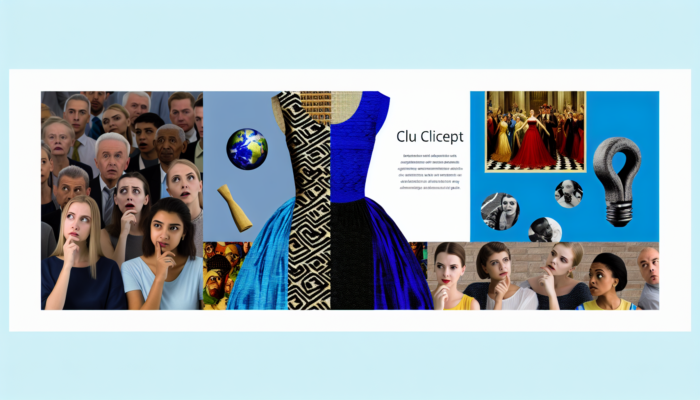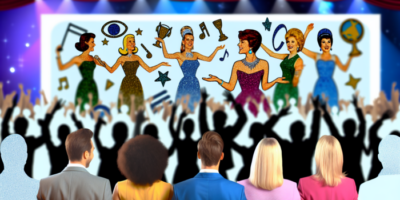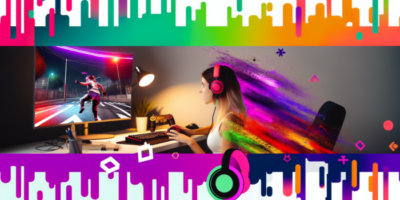In February 2015, a simple image of a dress sparked one of the most heated online debates in recent memory. The viral phenomenon, known as “The Dress,” divided the internet and led to countless discussions about perception, color, and reality. This is the story of how a seemingly innocent photograph turned into a worldwide spectacle that captured the attention of millions. Along the way, we’ll explore the science behind color perception and the psychological factors that contributed to this extraordinary event.
The Birth of a Viral Sensation
It all began when a mother of the bride posted a photo of her daughter’s wedding dress on social media, asking her friends whether the dress was blue and black or white and gold. This simple question ignited a firestorm of debate. Within hours, the post went viral, with users across various platforms weighing in on the color of the dress. Some saw it as blue and black, while others were convinced it was white and gold. How could such a straightforward image provoke such disparate interpretations?
The Power of Social Media
As the debate escalated, so did the reach of the post. Social media platforms like Facebook and Twitter became battlegrounds for color interpretation. Memes, gifs, and videos flooded the internet, each one attempting to sway opinions and showcase the divide. Celebrities jumped into the fray, sharing their own perspectives and further amplifying the discussion. The phenomenon highlighted the unique way social media can transform a simple image into a global conversation.
Understanding Color Perception
To comprehend the dress controversy, it’s essential to understand how human perception works. Color perception is subjective and can vary from person to person based on numerous factors, including lighting conditions, individual vision, and even cultural differences. In the case of the dress, the lighting in the original photo played a crucial role in how people interpreted the colors.
Researchers and scientists began dissecting the phenomenon, explaining that the human brain interprets colors based on context. For some viewers, the dress appeared in bright daylight, leading them to see it as white and gold. Others viewed it in shadowy conditions, causing them to perceive it as blue and black. This divergence in visual interpretation is a testament to the complexity of human perception.
Psychological Factors at Play
The dress debate wasn’t merely about color; it also touched on deeper psychological factors. Cognitive biases, such as confirmation bias, played a significant role. People were more likely to see the dress in the colors that aligned with their prior beliefs or opinions. This tendency to seek out information that confirms existing beliefs can lead to polarized opinions, further intensifying debates like the one surrounding the dress.
Moreover, the phenomenon also showcased the power of social identity. Individuals often align their opinions with their social groups, leading to collective reinforcement of certain viewpoints. As the dress continued to dominate conversations online, people rallied around their preferred interpretation, creating a sense of community among those who shared their perspective.
The Science Behind the Colors
As the debate raged on, scientists and researchers began to delve deeper into the phenomenon, studying why different people saw different colors. A team of researchers from the University of California, San Diego, published a study that provided insights into the optical illusions and lighting conditions that contributed to the dress’s appearance. They concluded that the brain’s color perception is influenced by the lighting environment and individual differences in color vision.
Furthermore, they highlighted that the dress’s appearance was a classic example of how our brains interpret colors based on surrounding context. This exploration into the science of color perception not only explained the dress phenomenon but also opened the door for broader discussions about visual processing and cognitive psychology.
The Cultural Impact of the Dress
The dress debate transcended mere online chatter; it became a cultural touchstone. It inspired a plethora of parodies, merchandise, and even academic discussions. Universities and educators used the episode to teach lessons about perception, psychology, and social media dynamics. The dress was featured in articles, studies, and even a segment on the popular television show “The Big Bang Theory.”
As the debate continued to unfold, the dress served as a reminder of how a single image can unify and divide people globally. It became a metaphor for how subjective experiences shape our understanding of reality. The cultural significance of the dress was undeniable, leaving a lasting legacy in the world of internet phenomena.
Lessons Learned from the Dress Debate
The great dress debate taught us valuable lessons about perception, perspective, and the power of social media. One of the most profound realizations was the importance of acknowledging differing viewpoints. In a world where information travels rapidly, it’s crucial to approach discussions with an open mind and a willingness to understand others’ perspectives.
Additionally, the phenomenon highlighted the role of cognitive biases in shaping our opinions. Understanding how biases influence our perceptions can help foster more constructive conversations and bridge divides in our increasingly polarized world.
The Enduring Mystery
To this day, the dress remains a captivating mystery. Although the original image has been extensively analyzed and discussed, the debate over its colors continues to intrigue people. The dress serves as a reminder of the complexities of human perception and the nuances of reality. While we may never fully resolve the mystery of the dress, its impact on culture and social media dynamics is undeniable.
Final Thoughts
The story of the blue and black or white and gold dress is more than just a viral internet moment; it represents the intricate relationship between perception, psychology, and social interaction. As we navigate a world filled with diverse opinions and interpretations, we must remember the lessons learned from this remarkable episode. Embracing differing perspectives and fostering open dialogue can lead to richer, more meaningful discussions that transcend the superficial divides of color and opinion.





